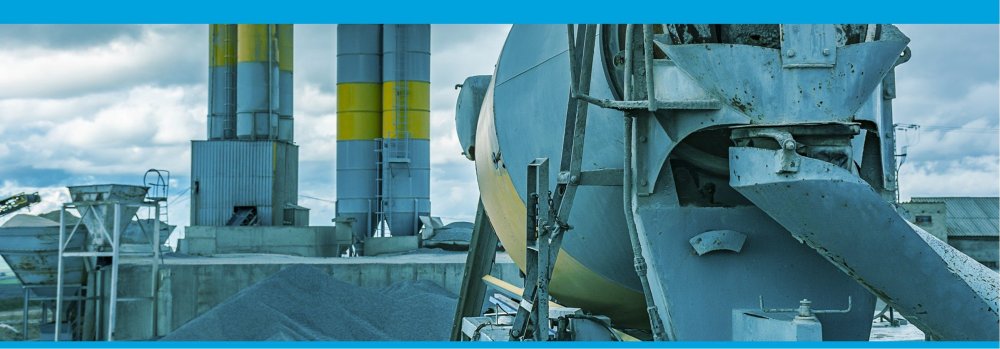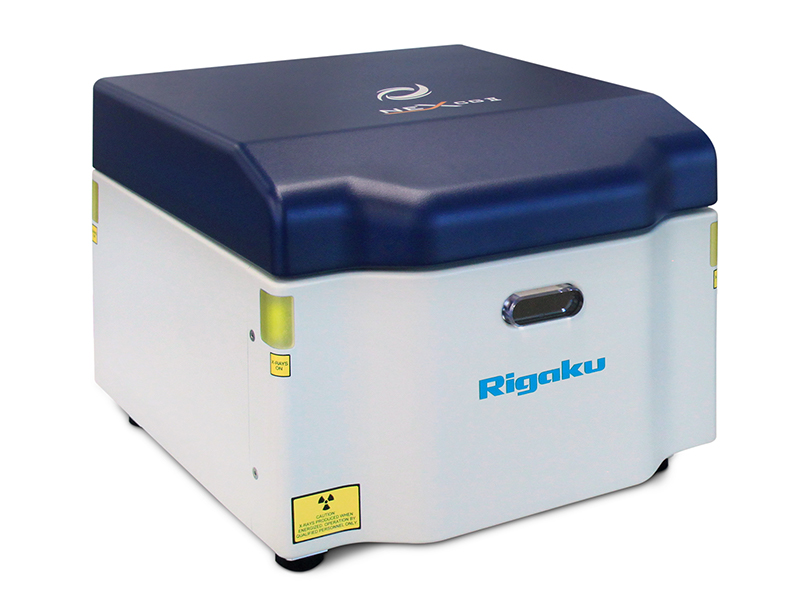Analysis of Cement and ASTM C114 Qualification

Scope
Cartesian Geometry EDXRF performance is demonstrated for the analysis of finished Portland cement and ASTM C114-18 qualification.
Background
EDXRF is a simple analysis technique used in cement plants around the world. The technique is ideal for QA/QC throughout the cement production process. EDXRF can be used as a screening tool and a QA/QC analyzer to ensure proper quality of incoming feedstocks, raw meal mixture balances, the addition of gypsum, and throughout the manufacturing process, including analyzing alternative fuels and ULSD used for firing the kilns.
 Model: NEX CG II
Model: NEX CG II
Rigaku NEX CG II complies with the performance required in ASTM C114 and makes an excellent backup analyzer to WDXRF or as the main analyzer when producing Portland cement.
International standard test methods
NEX CG II can be used to comply with the following international testing norms.
| Designation | Title |
| ASTM C114-18 | Standard Test Methods for Chemical Analysis of Hydraulic Cement |
| ISO 29581 – 2 : 2010 | Cement -- Test methods -- Part 2: Chemical analysis by X-ray fluorescence |
Calibration
Empirical calibrations were built using a set of eight NIST SRM certified standards: 1880b, 1881b, 1884b, 1885b, 1886b, 1887b, 1888b, 1889b. Using the empirical approach, X-ray absorption/enhancement “alpha corrections” are then employed to automatically compensate for variations in X-ray absorption and enhancement effects within the sample due to the independent variations in element concentration, thus yielding a very accurate model characterizing the cement type. A separate calibration method should be set up for raw meal, clinker, and finished cements. For producing cement at a cement plant, it is recommended to augment the NIST standards with additional standards to further optimize the model.
A summary of the finished Portland cement empirical calibration is shown here using the eight NIST SRM certified standards.
| Component | Concentration Range (mass%) |
| SiO₂ | 18.39 – 29.05 |
| Al₂O₃ | 3.903 – 8.812 |
| Fe₂O₃ | 0.297 – 3.681 |
| CaO | 49.27 – 66.05 |
| MgO | 1.562 – 4.740 |
| SO₃ | 2.634 – 4.599 |
| Na₂O | 0.017 – 0.790 |
| K₂O | 0.016 – 1.115 |
| TiO₂ | 0.2034 – 0.3011 |
| P₂O₅ | 0.0510 – 0.2970 |
| ZnO | 0.0042 – 0.1198 |
| Mn₂O₃ | 0.0264 – 0.1981 |
| Cl | 0.0021 – 0.0183 |
| SrO | 0.0258 – 0.2840 |
Precision
To demonstrate repeatability (precision), NIST SRM 1887b was chosen from the set of calibration standards. The sample was measured in static position for ten repeat analyses with typical results shown below.
| NIST SRM 1887b | Standard Value | Average Value | Std. Dev |
| SiO₂ | 19.59 | 19.69 | 0.01 |
| Al₂O₃ | 4.911 | 4.993 | 0.009 |
| Fe₂O₃ | 2.471 | 2.453 | 0.002 |
| CaO | 61.15 | 61.22 | 0.02 |
| MgO | 3.624 | 3.630 | 0.039 |
| SO₃ | 4.599 | 4.581 | 0.010 |
| Na₂O | 0.288 | 0.230 | 0.014 |
| K₂O | 0.961 | 0.955 | 0.002 |
| TiO₂ | 0.203 | 0.208 | 0.001 |
| P₂O₅ | 0.1540 | 0.1587 | 0.0006 |
| ZnO | 0.0156 | 0.0158 | 0.0001 |
| Mn₂O₃ | 0.0957 | 0.0943 | 0.0003 |
| Cl | 0.0100 | 0.0179 | 0.0002 |
| SrO | 0.2625 | 0.2612 | 0.0002 |
ASTM C114
ASTM C114 and is a performance-based method. The analytical technique and operators must meet the qualification requirements given in C114 3.3.2 and not exceed limits given in C114 Table 1.
Samples
NIST Portland Cement SRMs were used in the qualification: 1880b, 1884b, 1885b, 1886b, 1887b, 1888b, and 1889b.
C114 qualification requirements
- Calibrate the analyzer using manufacturer’s guidelines.
- Measure at least seven hydraulic cement CRM* (Certified Reference Material) standards in one day.
- On a second day, prepare and measure a second aliquot of each CRM.
- The difference between duplicates, and the difference between the average of each duplicate and the CRM certified value, cannot exceed limits given in C114 Table 1.
The term SRM (Standard Reference Material) is used by NIST.
| Component | C114 Maximum Difference Between Duplicates1 | NEX CG II Maximum Difference Between Duplicates | C114 Maximum Difference of the Average of Duplicates from the SRM Certificate Value2 | NEX CG II Maximum Difference of the Average of Duplicates from the SRM Certificate Value |
| SiO₂ | 0.16 | 0.10 | 0.2 | 0.13 |
| Al₂O₃ | 0.20 | 0.09 | 0.2 | 0.10 |
| Fe₂O₃ | 0.10 | 0.05 | 0.10 | 0.04 |
| CaO | 0.20 | 0.09 | 0.3 | 0.23 |
| MgO | 0.16 | 0.09 | 0.2 | 0.10 |
| SO₃ | 0.10 | 0.08 | 0.2 | 0.08 |
| Na₂O | 0.03 | 0.02 | 0.05 | 0.03 |
| K₂O | 0.03 | 0.01 | 0.05 | 0.03 |
| TiO₂ | 0.02 | 0.01 | 0.03 | 0.01 |
| P₂O₅ | 0.03 | 0.01 | 0.03 | 0.01 |
| ZnO | 0.03 | 0.003 | 0.03 | 0.002 |
| Mn₂O₃ | 0.03 | <0.01 | 0.03 | <0.01 |
| Cl | 0.003 | 0.001 | 0.005 | 0.002 |
Conclusion
The Rigaku NEX CG II combines Cartesian Geometry indirect excitation with secondary targets, polarization targets, and a high-performance large area SDD detector to yield the optimum performance for elemental analysis of cement. NEX CG II can be used to comply with ASTM C114-18 and ISO 29581-2:2010. During the entire production and processing cycle, oxide composition of the cement material must be reliably monitored to ensure optimal process control, physical characteristics of the cement, as well as profitability. The Rigaku NEX CG II analyzer is an ideal tool throughout the quality control process as the main instrument or as a backup to WDXRF systems. The system can also be used for verifying raw materials and clinkers, as well as testing various alternative fuels used at cement plants. By adding Rigaku RPF-SQX Fundamental Parameters, the NEX CG II is also an excellent analyzer for use in R&D to examine and compare formulations and for failure analysis. Powerful but simple to use, the NEX CG II is an excellent tool for non-technical operators and researchers alike.
